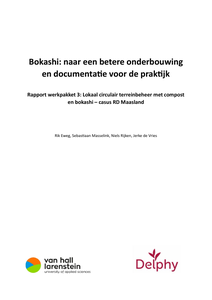Plasmid-mediated dissemination of antibiotic resistance among fecal Enterobacteriaceae in natural ecosystems may contribute to the persistence of antibiotic resistance genes in anthropogenically impacted environments. Plasmid transfer frequencies measured under laboratory conditions might lead to overestimation of plasmid transfer potential in natural ecosystems. This study assessed differences in the conjugative transfer of an IncP-1 (pKJK5) plasmid to three natural Escherichia coli strains carrying extended-spectrum beta-lactamases, by filter mating. Matings were performed under optimal laboratory conditions (rich LB medium and 37°C) and environmentally relevant temperatures (25, 15 and 9°C) or nutrient regimes mimicking environmental conditions and limitations (synthetic wastewater and soil extract). Under optimal nutrient conditions and temperature, two recipients yielded high transfer frequencies (5 × 10–1) while the conjugation frequency of the third strain was 1000-fold lower. Decreasing mating temperatures to psychrophilic ranges led to lower transfer frequencies, albeit all three strains conjugated under all the tested temperatures. Low nutritive media caused significant decreases in transconjugants (−3 logs for synthetic wastewater; −6 logs for soil extract), where only one of the strains was able to produce detectable transconjugants. Collectively, this study highlights that despite less-than-optimal conditions, fecal organisms may transfer plasmids in the environment, but the transfer of pKJK5 between microorganisms is limited mainly by low nutrient conditions.
DOCUMENT

In een tijd waarin de wereld geconfronteerd wordt met een toenemende bevolking en de daaruit voortvloeiende behoefte aan voedsel, staat het lectoraat Eiwittransitie voor een uiterst relevante uitdaging. De groeiende vraag naar eiwitten en de noodzaak om onze consumptiegewoonten in balans te krijgen met natuur en onze gezondheid vormen de kern van de missie van dit lectoraat.
DOCUMENT

Renewing agricultural grasslands for improved yields and forage quality generally involves eliminating standing vegetation with herbicides, ploughing and reseeding. However, grassland renewal may negatively affect soil quality and related ecosystem services. On clay soil in the north of the Netherlands, we measured grass productivity and soil chemical parameters of ‘young’ (5–15 years since last grassland renewal) and ‘old’ (>20 years since last grassland renewal) permanent grasslands, located as pairs at 10 different dairy farms. We found no significant difference with old permanent grassland in herbage dry matter yield and fertilizer nitrogen (N) response, whereas herbage N yield was lower in young permanent grassland. Moreover, the young grassland soil contained less soil organic matter (SOM), soil organic carbon (C) and soil organic N compared to the old grassland soil. Grass productivity was positively correlated with SOM and related parameters such as soil organic C, soil organic N and potentially mineralizable N. We conclude that on clay soils with 70% desirable grasses (i.e., Lolium perenne and Phleum pratense) or more, the presumed yield benefit of grassland renewal is offset by a loss of soil quality (SOM and N-total). The current practice of renewing grassland after 10 years without considering the botanical composition, is counter-productive and not sustainable.
DOCUMENT

VHL University of Applied Sciences (VHL) is a sustainable University of AppliedSciences that trains students to be ambitious, innovative professionals andcarries out applied research to make a significant contribution to asustainable world. Together with partners from the field, they contribute to innovative and sustainable developments through research and knowledge valorisation. Their focus is on circular agriculture, water, healthy food & nutrition, soil and biodiversity – themes that are developed within research lines in the variousapplied research groups. These themes address the challenges that are part ofthe international sustainability agenda for 2030: the sustainable developmentgoals (SDGs). This booklet contains fascinating and representative examplesof projects – completed or ongoing, from home and abroad – that are linked tothe SDGs. The project results contribute not only to the SDGs but to their teaching as well.
DOCUMENT

Eight new primer sets were designed for PCR detection of (i) mono-oxygenase and dioxygenase gene sequences involved in initial attack of bacterial aerobic BTEX degradation and of (ii) catechol 2,3-dioxygenase gene sequences responsible for meta-cleavage of the aromatic ring. The new primer sets allowed detection of the corresponding genotypes in soil with a detection limit of 10(3)-10(4) or 10(5)-10(6) gene copies g(-1) soil, assuming one copy of the gene per cell. The primer sets were used in PCR to assess the distribution of the catabolic genes in BTEX degrading bacterial strains and DNA extracts isolated from soils sampled from different locations and depths (vadose, capillary fringe and saturated zone) within a BTEX contaminated site. In both soil DNA and the isolates, tmoA-, xylM- and xylE1-like genes were the most frequently recovered BTEX catabolic genes. xylM and xylE1 were only recovered from material from the contaminated samples while tmoA was detected in material from both the contaminated and non-contaminated samples. The isolates, mainly obtained from the contaminated locations, belonged to the Actinobacteria or Proteobacteria (mainly Pseudomonas). The ability to degrade benzene was the most common BTEX degradation phenotype among them and its distribution was largely congruent with the distribution of the tmoA-like genotype. The presence of tmoA and xylM genes in phylogenetically distant strains indicated the occurrence of horizontal transfer of BTEX catabolic genes in the aquifer. Overall, these results show spatial variation in the composition of the BTEX degradation genes and hence in the type of BTEX degradation activity and pathway, at the examined site. They indicate that bacteria carrying specific pathways and primarily carrying tmoA/xylM/xylE1 genotypes, are being selected upon BTEX contamination.
DOCUMENT
Abstract Aureobasidium is omnipresent and can be isolated from air, water bodies, soil, wood, and other plant materials, as well as inorganic materials such as rocks and marble. A total of 32 species of this fungal genus have been identified at the level of DNA, of which Aureobasidium pullulans is best known. Aureobasidium is of interest for a sustainable economy because it can be used to produce a wide variety of compounds, including enzymes, polysaccharides, and biosurfactants. Moreover, it can be used to promote plant growth and protect wood and crops. To this end, Aureobasidium cells adhere to wood or plants by producing extracellular polysaccharides, thereby forming a biofilm. This biofilm provides a sustainable alternative to petrol-based coatings and toxic chemicals. This and the fact that Aureobasidium biofilms have the potential of self-repair make them a potential engineered living material avant la lettre.
MULTIFILE

The research presented in this thesis has highlighted (bio)geochemical, hydrological, and wetland ecological processes that interact and enhance ecosystem development on wetlands built on fine sediment. A combination of greenhouse and laboratory experiments were conducted. Some measured data from these experiments formed important input for subsequent analysis in a modeling environment. The findings presented in Chapters 2-6 can be divided into four topics: 1) Plant–soil interactions in the terrestrial zone, 2) wetland–terrestrial processes influencing nutrient availability in the land–water zone, 3) effects of plants on sediment consolidation in the terrestrial zone, and 4) effects of bioturbation on nutrient availability in the aquatic zone. The next sections give a summary of the results for these four topics. The last section summarizes the recommendations formulated for the Marker Wadden project.
DOCUMENT

Dit rapport is onderdeel van het project 'Bokashi: naar een betere onderbouwing en documentatie voor de praktijk' en het resultaat van het onderzoek dat is uitgevoerd binnen Werkpakket 3: 'Economische Waarde'. In dit werkpakket zijn de duurzaamheidsaspecten (economisch, sociaal en ecologisch) van organische stromen en het verwerken tot bodemverbeteraars nader gekwantificeerd, waarbij wij ons richtten op bokashi (gefermenteerde organische reststromen) en compost. Om het onderzoek zoveel mogelijk aan te laten sluiten bij de praktijk is ervoor gekozen om een kosten-baten analyse uit te voeren aan de hand van een concrete casus met een concrete vraag: het regionaal recyclen van organische stromen van de Reinigingsdienst (RD) Maasland. RD Maasland heeft als ambitie om in de komende jaren de organische stromen op regionaal niveau te recyclen en daarmee bij te dragen aan vitalisering van de bodem door het verhogen van het gehalte organische stof. Daarvoor kan de dienst zich richten op het toepassen van compost of bokashi. In het onderzoek hebben we daarom de toepassingsmogelijkheden van compost en bokashi naast elkaar gezet. Het rapport begint met een algemene beschouwing van praktijkervaringen met bokashi als potentieel alternatief voor compostering. Vervolgens wordt aan de hand van de casus RD Maasland ingegaan op de huidige organische stromen en de bewerking daarvan in een deelgebied van RD Maasland en worden de kosten en baten doorgerekend van de huidige ketens ten opzichte van alternatieve ketens met regionale bewerking. Daarbij richten wij ons op bermmaaisel/ bladeren en de productie van compost en bokashi voor de verbetering van de bodemvitaliteit. Ter inspiratie volgt een beschrijving van regionale bewerking van stromen door een samenwerking van gemeentes en agrariërs in Friesland. Daarna volgt een concluderende paragraaf, waarin een mogelijk pad wordt geschetst voor de ontwikkeling van circulair terreinbeheer in het werkgebied van de reinigingsdienst Maasland gebaseerd op economische en andere duurzaamheidsaspecten. Het rapport sluit af met een reflectie op de opschalings- en toepassingsmogelijkheden elders in Nederland.
DOCUMENT

De EU en Nederland streven naar significante reducties in broeikasgas- en stikstofemissies tegen 2030. De Nederlandse melkveehouderij draagt met respectievelijk 36% en 48% bij aan de broeikasgasuitstoot en de ammoniakemissies van de landbouw. Het aanzuren van mest met zwavelzuur, zoals in Denemarken, is effectief maar kostbaar. Dit onderzoek evalueert de haalbaarheid van biologisch aanzuren van dierlijke mest met melasse als alternatief, met als doel het verminderen van emissies en het verbeteren van mestverwaarding.Op een melkveehouderij in Someren met circa 100 koeien werd een experiment uitgevoerd waarbij een kleinere mestkelder werd biologisch aangezuurd met melasse en een grotere kelder als controle diende. Beide kelders werden op 6 november 2023 nagenoeg leeggepompt en aan de kleine kelder werd 12% melasse (op initiële hoeveelheid mest basis) toegevoegd. De pH in de aangezuurde mestkelder daalde van 8,1 naar 5,5 in 13 dagen en stabiliseerde op 4,7. Na 9 weken steeg de pH naar 6,0. De aangezuurde dunne fractie bevatte significant meer fosfaat (61%) en de biogasopbrengst steeg met 43% ten opzichte van de controle.Dit onderzoek bevestigt de hypothese dat het toevoegen van organische (rest)stromen aan mestkelders effectief is om methaan- en ammoniakemissies te verlagen en de mestverwaarding te verbeteren. Daarnaast is de aanpak passend binnen de huidige bedrijfsvoering inclusief de regelgeving. De biogasproductie nam significant toe waardoor de mestverwaarding verbeterde.Aanbevolen wordt om de pH van drijfmest rond 5,5 te houden, het verzuringsproces eventueel op te starten met een organisch zuur, en verder onderzoek te doen naar optimale melassedosering, frequenter mengen, en inzet van alternatieve suikerrijke resstromen. Voor borging van het proces zijn implementatie van een pH-monitoringssysteem en aanvullende emissiemetingen noodzakelijk.
DOCUMENT

PowerPointpresentatie gebruikt op de 2e Kennisdeeldag ’Voedselbossen Zuidoost-Nederland’ in Maastricht op 11 december 2019.
DOCUMENT